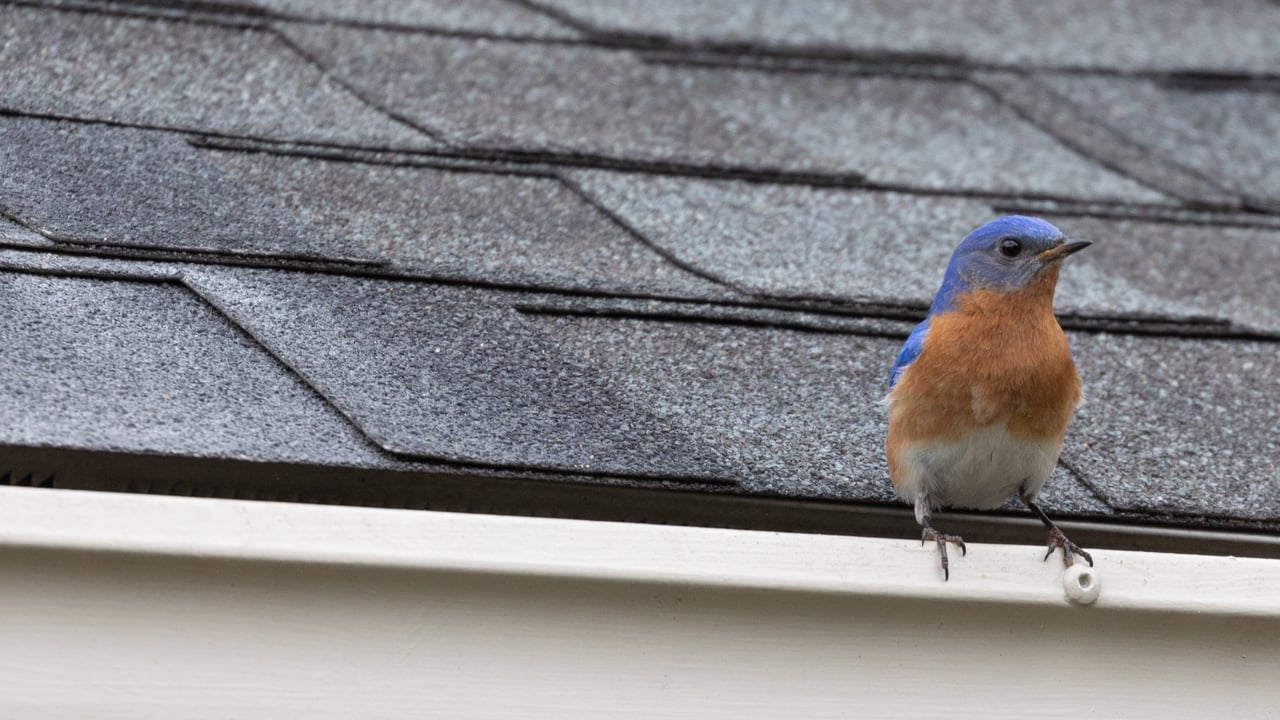Why Do Birds Fly Into Windows?
Unfortunately, several hundred million birds are killed each year as a result of collisions with windows.
Birds of all shapes and sizes travel at speeds high enough that a window collision almost always proves fatal. Birds that survive immediate impact are stunned and often fall prey to predators, like domestic cats, soon after a collision.
Why Are Birds Flying Into My Windows?
Birds cannot perceive most glass as a barrier, and often strike glass windows that reflect the sky or nearby greenery. Most birds migrate at night using the stars to navigate, and are drawn to city lights in urban areas along their migratory flyways. Birds are especially confused by light pollution on foggy or stormy nights, when the outline of the city and the source of the lights are less visible.
This confusion leads birds to land in the city, collide with buildings, and in some extreme cases, die of exhaustion. When downed birds reorient themselves and take flight in the morning, they often aim for a reflection and strike a window.
How to Prevent Birds from Hitting Windows
Research has determined that birds can hit windows of all sizes at any height (from a one-story house to high-rise building), at any time, day or night. Thankfully, there are several things a homeowner can do to prevent window collisions.
Observe Bird Collision Patterns
Window strikes frequently follow a pattern. You may find dead or injured birds repeatedly beneath the same window and at certain times of day. To determine what birds see in the reflection, stand directly in front of the glass. Repeat this at different times of the day to view the window's reflection under different light conditions.
Watch feeders and birdbaths to judge whether birds are colliding with windows as they fly from those locations. If this is the case, most researchers agree that the feeder should be moved closer to the window. Birds flying from a feeder only 2 or 3 feet away from the glass rarely get up enough speed to injure themselves.
Provide an Impact-absorbing Barrier
Normal window screens are among the best barriers for preventing window strikes. Not only do they break up the reflection, they also provide a springy impact-absorbing cushion for collision-bound birds.
You can cover windows with screen that affixes to the glass using hooks or suction cups. This reduces the reflection and prevents injury by cushioning the bird if it inadvertently flies toward the window. It also prevents territorial birds from attacking their reflection in the glass.
Break Up the Reflection
You can use any decals or stickers that are at least 6 inches in diameter to alert birds that they’re in an unsafe flying zone. Make sure to place several on the outside of the window, one foot apart, both horizontally and vertically.
Some decals are invisible to humans but contain a component that reflects ultraviolet sunlight that glows brilliantly for birds. These are slightly pricier, but a less visually-disruptive alternative to black decals.
Outdoor string curtains are another great option. Acopian Bird Savers are one popular commercially available option, but you can also make your own.
How to Help an Injured Bird
When a bird hits a window, swelling in the brain may temporarily incapacitate it. If there are cats or other predators nearby, place the bird in an enclosed box or under a colander to keep it safe.
Handle the bird as little as possible and do not attempt to give it food or water. As the swelling subsides and the bird becomes more active, you may release it. If the bird doesn’t recover, you’ll need to enlist the help of an expert.
Stay Connected
Don't miss a beat on all the ways you can get outdoors, celebrate nature, and get involved.



